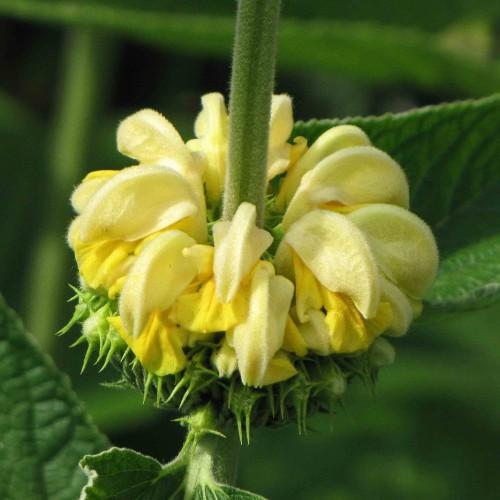
turkish sage
Phlomis russeliana
Cycle:
Herbaceous Perennial
Watering:
Minimum
Hardiness Zone:
5 - 9
Flowers:
Flowers In Summer
Sun:
Full sun
Soil:
Well-drained
Fruits:
Fruits Ready In Summer
Leaf:
Yes
Growth Rate:
High
Maintenance:
Low
Drought Tolerant:
Yes
Care Level:
Medium
watering
Turkish sage should be watered every 10 to 14 days and about 1 inch of water per watering session is sufficient, or approximately 10 gallons for a 4 x 4 ft planting area. During hot and dry summer weather, additional water may be necessary to keep the plant from wilting. Watering should be done in the mornings, as this reduces the chances of fungal diseases attacking the plant. For optimal plant growth, water the soil directly rather than sprinkle it on the foliage. This will keep the foliage dry and reduce the possibility of fungal infections.
sunlight
Turkish Sage (Phlomis russeliana) will do best when they are grown in full sun, meaning that they should be placed in an area that receives at least 6 to 8 hours of direct sunlight a day. They do not do well in shady areas and will often become leggy and develop fewer flowers. During the summer months in most climates, Turkish Sage can evolve and adapt to slightly more shade, which can help protect it from getting over-exposed to intense sunlight. During the winter, however, they should receive full sun if possible.
pruning
Turkish sage (Phlomis russelliana) should be pruned in late winter or early Spring, just before the new growth begins. Pruning should be fairly light and consist of removing dead or damaged branches and lightly shaping the plant. Avoid pruning more than 1/3 of the plant so that the flowering is not compromised. Make sure to clean any tools used for pruning with a rubbing alcohol to prohibit spread of disease.
